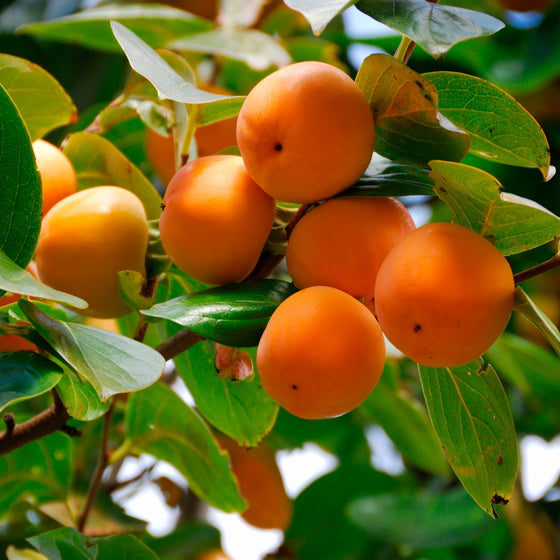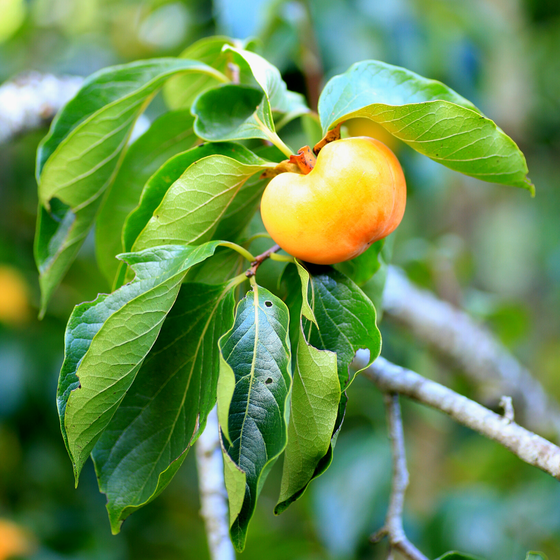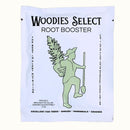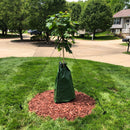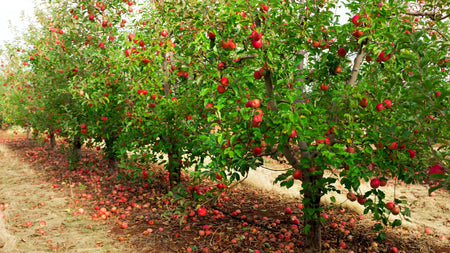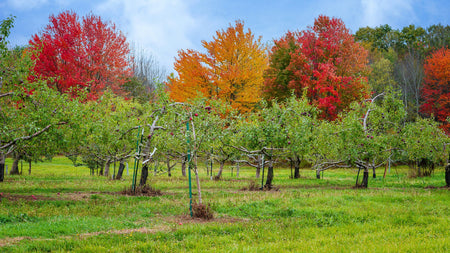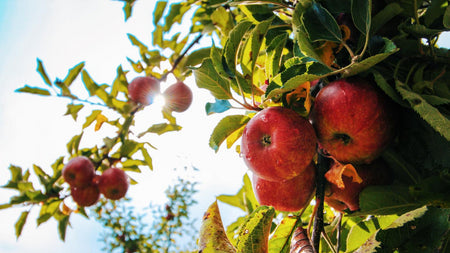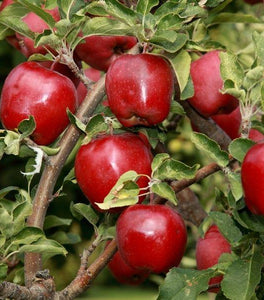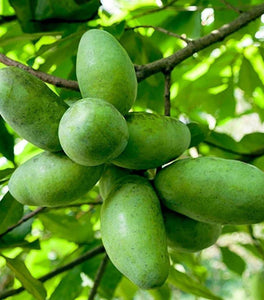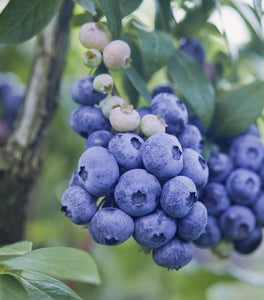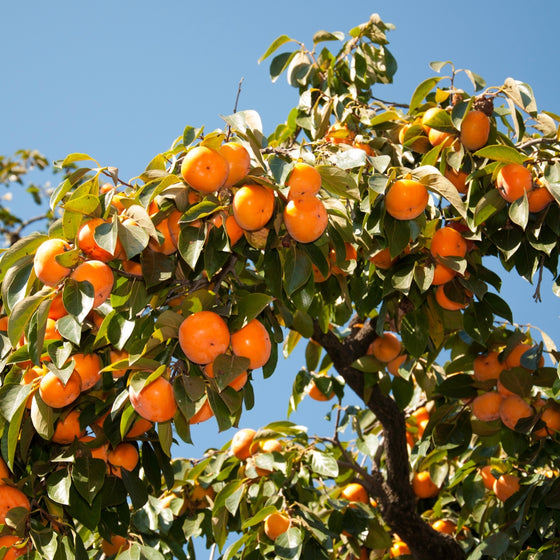
Images Depict Mature Plants
American Persimmon Trees for Sale Online
The American Persimmon Tree (Diospyros virginiana) is a hardy, native fruit tree known for its richly flavored, sweet orange fruit and excellent adaptability to a variety of growing conditions. Producing small to medium-sized persimmons that ripen in late fall, this deciduous tree offers both ornamental and edible value. The fruit is best enjoyed when fully ripe, developing a honey-like sweetness that makes it perfect for fresh eating, baking, preserves, or wildlife forage. In addition to its delicious harvest, the American Persimmon features attractive oval leaves that turn brilliant shades of yellow and orange in autumn, adding seasonal color to the landscape.
Growing 30 to 40 feet tall and 20 to 35 feet wide at maturity, the American Persimmon Tree is ideal for home orchards, food forests, and naturalized areas. It thrives in full sun and well-drained soil but is highly adaptable to a wide range of conditions, including clay and dry soils. This low-maintenance tree is drought tolerant once established and supports local ecosystems by providing food for birds, deer, and other wildlife. While some varieties are self-fertile, planting two trees will increase pollination and yield more abundant fruit.
Hardy in USDA Zones 4–9, the American Persimmon Tree is a native North American species that combines beauty, ecological benefits, and reliable fruit production. Its deep taproot and strong wood make it resilient in challenging conditions, while its fruit attracts beneficial wildlife and adds value to edible landscapes. Whether you’re growing for taste, shade, or sustainability, this tree is a rewarding and multifunctional choice for gardeners and landowners alike.
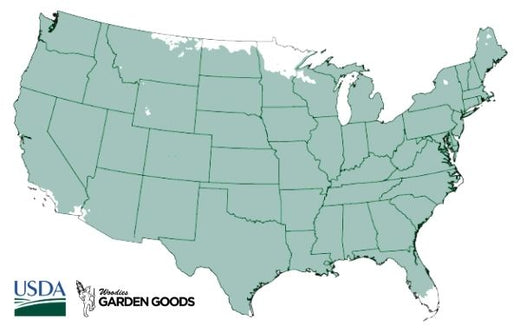
| Hardiness Zone: | 4-9 |
|---|---|
| Mature Height: | 30 to 40 Feet |
| Mature Width: | 20 t0 25 Feet |
| Classification: | Fruit Tree |
| Sunlight: | Full Sun to partial shade |
| Habit: | Upright |
| Foliage: | Green |
| Soil Condition: | Any well drained soil; Loamy |
| Water Requirements: | Water well until established |
How to Care for American Persimmon Tree
Be sure to read our planting instructions to ensure a healthy and happy American Persimmon Tree for years to come!
How do I Plant an American Persimmon Tree?
Planting an American Persimmon Tree (Diospyros virginiana) begins with selecting a location that receives full sun for at least 6–8 hours per day and has well-drained soil. Although this native tree is adaptable to a wide range of soils—including sandy, loamy, and even clay—it performs best in slightly acidic to neutral soil with good drainage. Start by digging a hole twice as wide and just as deep as the root ball. Remove the tree from its container, gently loosen any encircling roots, and place it in the hole so the top of the root ball is level with the surrounding soil. Backfill with the excavated soil, tamp it down lightly, and water deeply to eliminate air pockets and help the roots settle. After planting, apply a 2–3 inch layer of mulch around the base of the tree to conserve moisture, suppress weeds, and regulate soil temperature—keeping the mulch a few inches away from the trunk to prevent rot. Water regularly during the first growing season to establish a strong root system. If you're planting more than one tree for cross-pollination and increased fruit production, space them 20–25 feet apart. With proper site preparation and early care, the American Persimmon Tree will grow into a productive, low-maintenance addition to orchards, homesteads, or native landscape designs, offering seasonal beauty and sweet, late-fall fruit.
How do I Water an American Persimmon Tree?
Watering an American Persimmon Tree (Diospyros virginiana) properly is essential during its first few years to ensure deep root development and strong establishment. In the first growing season, water deeply once or twice a week, especially during dry or hot periods, to keep the soil consistently moist but not waterlogged. Focus on watering at the base of the tree, allowing moisture to soak into the root zone without saturating the surrounding area. Deep watering encourages the tree to develop a strong taproot, which will help it become more drought-tolerant as it matures. Once established, American Persimmon Trees are highly drought tolerant and generally require minimal supplemental watering. However, during extended periods of drought or while the tree is fruiting, occasional deep watering can support better fruit production and overall tree health. Applying a 2–3 inch layer of mulch around the root zone helps retain moisture, regulate soil temperature, and suppress weeds. With a consistent watering routine in the early stages, your American Persimmon Tree will thrive, producing sweet, flavorful fruit and providing ornamental value with minimal long-term maintenance.
How do I Fertilize an American Persimmon Tree?
Fertilizing an American Persimmon Tree (Diospyros virginiana) should be done with care to promote healthy growth and fruit production without overstimulating the tree. In the first year after planting, it’s best to avoid fertilization and allow the tree to focus on establishing strong roots. Beginning in the second year, apply a balanced, slow-release fertilizer such as a 10-10-10 or a product formulated for fruit trees in early spring, just before new growth begins. Spread the fertilizer evenly around the root zone, keeping it a few inches away from the trunk, and water thoroughly after application to help nutrients absorb into the soil. Avoid over-fertilizing, particularly with high-nitrogen formulas, as this can lead to excessive vegetative growth at the expense of fruit development. For a more natural approach, top-dress annually with compost or well-aged manure to enrich the soil organically and maintain a balanced nutrient profile. American Persimmon Trees benefit from light annual feeding, especially during their fruit-bearing years. With proper fertilization and good cultural care, this native tree will thrive in home orchards or edible landscapes, rewarding you with sweet, late-season fruit and a strong, healthy structure.

How and When Should I Prune my American Persimmon Tree?
Pruning your American Persimmon Tree (Diospyros virginiana) is important for shaping its structure, improving air circulation, and encouraging healthy fruit production. The best time to prune is in late winter or early spring while the tree is still dormant and before new growth begins. Start by removing any dead, damaged, or diseased wood, followed by crossing or inward-growing branches that can lead to crowding. For young trees, focus on establishing a strong central leader and evenly spaced scaffold branches to support future fruit loads. This helps create an open, balanced canopy that allows sunlight to reach all parts of the tree. As your American Persimmon Tree matures, continue with annual light pruning to maintain its shape and remove any suckers or water sprouts that may appear at the base or along the trunk. Avoid heavy pruning, as this can reduce fruit yield for the season. Always use clean, sharp tools to make clean cuts just above a bud or branch collar. Consistent pruning not only enhances the tree’s health and appearance but also promotes better fruit size, flavor, and accessibility. With proper timing and technique, your American Persimmon will thrive as a productive and ornamental feature in your landscape.

